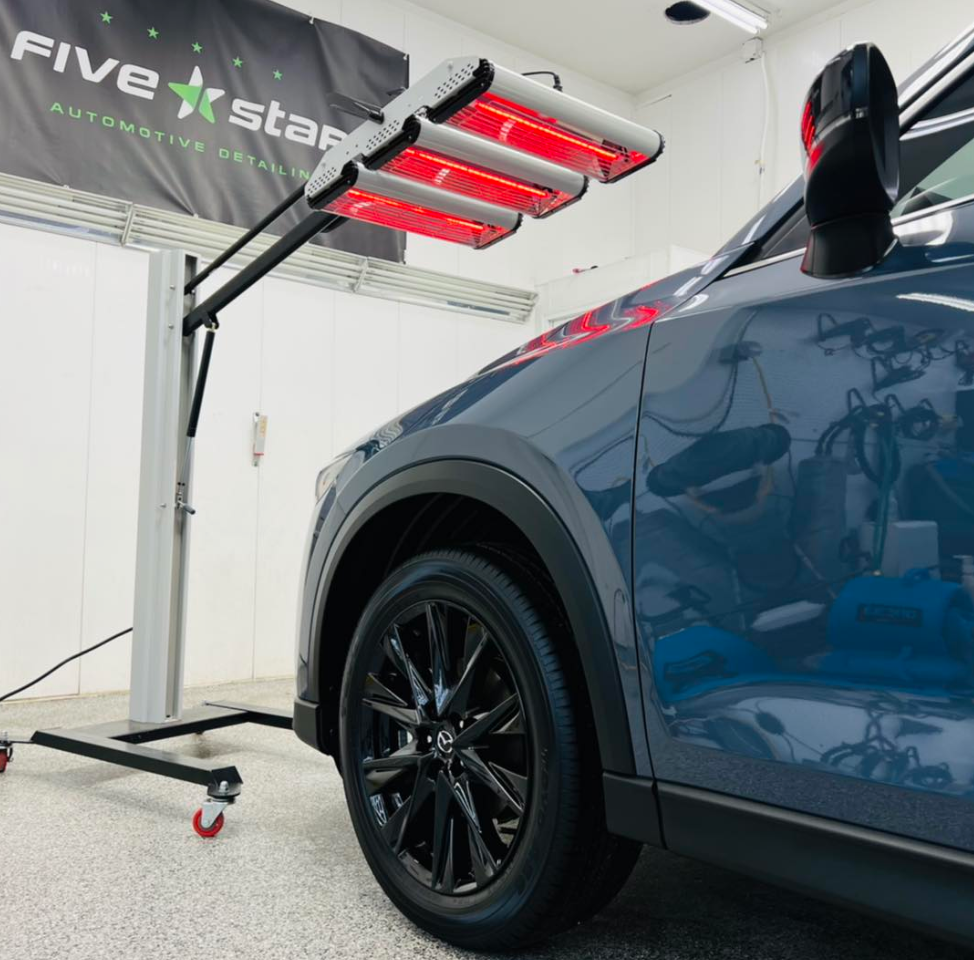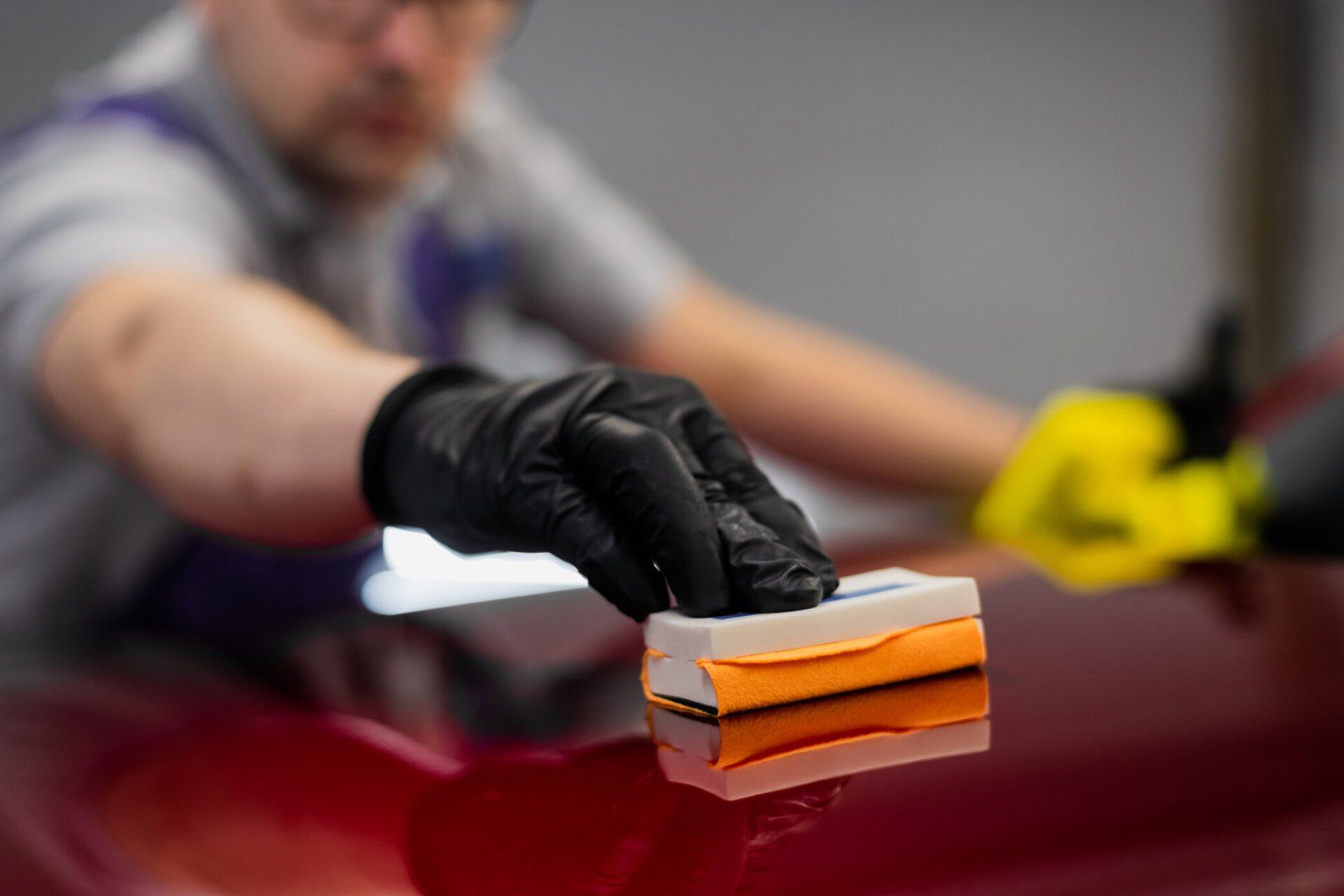5 Reasons Why You Should Get Your Car's Windows Tinted
Ever thought about upgrading your ride but weren't sure where to start? Window tinting might just be the perfect addition you've been looking for. Not only does it add a sleek aesthetic appeal, but it also offers a myriad of practical benefits. Delve into this blog post as we explore five compelling reasons why window tint installation should be your next car modification.
Follow us down this exciting alley, and you won’t view your clear windows in the same light again!
The top 5 reasons you should have your car's windows tinted include protection from harmful UV rays, protection of upholstery, insulation from solar heat, enhanced privacy and security, and shattered glass protection. Tinted windows can block up to 99% of UVA and UVB rays, which can reduce the risk of skin cancer and prevent "trucker tan." It can also protect your upholstery from fading or cracking caused by prolonged sun exposure.
Furthermore, window film provides insulation from solar heat, which can improve overall comfort while reducing strain on your car's air conditioning system. Additionally, tinted windows can enhance privacy by preventing thieves from easily seeing into the vehicle. Lastly, it adds an extra layer of safety by increasing the resistance of car windows to shattering.
Benefits of Window Tinting: UV Protection and Heat Reduction
When it comes to protecting your car and enhancing your driving experience, window tinting proves to be an exceptional investment. Let's explore two significant benefits of window tinting: UV protection and heat reduction.
1. Protection from Harmful UV Rays: Exposing yourself to prolonged sunlight can put you at risk for various health concerns, such as skin cancer and premature aging. But did you know that your car's windows alone may not provide sufficient protection from the sun's harmful ultraviolet (UV) rays?
Window tinting acts as a shield against these rays by blocking up to 99.9% of UVA and UVB radiation. This effectively reduces your exposure to harmful UV rays, contributing to a safer and healthier driving experience. Imagine yourself on a long road trip when you suddenly notice a visible difference between the arm resting on the window sill and the one kept away from direct sunlight.
The arm exposed to sunlight feels considerably hotter due to increased solar heat gain, while the other remains relatively cooler due to the protective layer of window tinting. This stark contrast demonstrates how window tinting can effectively mitigate heat buildup inside your vehicle.
Now that we understand the importance of UV protection and heat reduction, let's delve deeper into how exactly window tinting achieves this feat.
How Window Tinting Blocks UV Rays
Window tinting is not just about aesthetics; it serves a practical purpose by effectively blocking harmful UV rays. But how does window tinting accomplish this?
Window films used in professional car window tinting are specifically designed with advanced technology that includes either metallic or ceramic particles embedded within the film itself.
These particles work together to create a protective barrier against UV rays.
It absorbs and reflects the majority of the UV radiation, preventing it from passing through the window glass and into the car cabin.To put this in perspective, think of a window tint as sunscreen for your car.
Just as you apply sunscreen to protect your skin from harmful UV rays, window tints provide a similar function for your vehicle. It ensures that the interior of your car and its occupants are shielded from the damaging effects of prolonged sun exposure.
Window tinting not only blocks UV rays but also reduces the transmission of solar heat. This is achieved by incorporating multiple layers within the film itself, each with unique properties designed to reflect or absorb heat.
By reducing heat transfer into the car's interior, window tinting helps keep the cabin cooler and more comfortable, particularly during the scorching summer months.
Think of window tinting as an effective thermal insulator that prevents excessive heat buildup inside your car, much like how insulation in your home keeps it cooler during hot weather.
With an understanding of how window tinting blocks UV rays and provides heat reduction, it's clear why investing in professional car window tinting is a smart choice for any vehicle owner looking to enhance both their comfort and overall driving experience.
Enhancing Visibility and Privacy with Tinted Windows
Tinted windows are well-known for improving visibility by reducing glare from headlights and sunlight. Driving on bright, sunny days or at night with glaring headlights coming at you can be difficult. This glare can temporarily blind you or cause eye discomfort, compromising your ability to react quickly on the road.
By applying window tinting, you minimize glare significantly.
The film acts as a filter, reducing the intensity of light that enters the vehicle.
This allows you to have a clearer view of the road ahead and enhances your overall driving experience. Additionally, tinted windows also provide privacy by limiting visibility into your car's interior. Imagine being stuck in traffic or parked in a crowded parking lot.
Passers-by can easily see inside your vehicle without tinted windows, potentially jeopardizing your privacy and raising security concerns. However, window tinting prevents outsiders from peering into your vehicle, providing you with privacy and protection from prying eyes and potential theft. Some may argue that tinted windows reduce your ability to see clearly at night or in poorly lit areas.
While heavily tinted windows can reduce visibility in such conditions, modern window films are available in a variety of tint levels to achieve a balance of shade and clarity. It is crucial to adhere to local laws and regulations regarding the level of darkness of window tints to ensure safety while driving.
Now that we understand how window tinting can enhance both visibility and privacy, let's dive into another significant benefit of this automotive upgrade: prolonging the life of your car's interior.
- Studies have shown that window tinting can block up to 99% of harmful UV rays, drastically reducing the risk of skin cancer for frequent drivers.
- According to research, high-quality window tints can reduce internal vehicle temperatures by up to 60%, reducing reliance on air conditioning and potentially saving fuel.
- A report on vehicle break-ins highlighted that cars with tinted windows were broken into less often, as the level of privacy makes it harder for thieves to identify valuable contents.
Prolonging Car Interior Life Through Window Tinting
When it comes to protecting your car's interior, window tinting provides an efficient and effective solution. The harsh rays of the sun can cause significant damage over time, leading to fading, cracking, and discoloration of your upholstery and dashboard. By investing in professional window tinting now, you can prolong the lifespan of your car's interior and maintain its pristine condition.
By applying window tint to your car's windows, you create a barrier that keeps harmful UV rays out. Window tint can filter out 99.9% of UVA and UVB rays, lowering the risk of skin cancer and preventing "trucker tans." The tinted film acts as a shield, preventing direct sunlight from penetrating the glass and causing damage to your upholstery or dashboard.
Now that we know how window tinting can help protect against UV damage, let us look at how it specifically helps protect car upholstery.
How Tinting Can Protect Car Upholstery
Long-term exposure to sunlight can easily damage the delicate materials used to make car upholstery, such as leather or fabric. When left unprotected, these materials are susceptible to fading, cracking, and deterioration caused by excessive heat and UV radiation.
Picture yourself driving in scorching summer heat while parked outside for hours. When you return to your car, the interior feels like an oven, and your upholstery is hot to the touch. This intense heat not only makes it uncomfortable to sit in but also accelerates the aging process of your car's interior materials.
The constant exposure to high temperatures can cause the upholstery to fade, lose its color, and even crack or split.
Window tint acts as insulation, reducing the amount of solar heat that enters your car's interior. The tinted film helps regulate the temperature inside the car, preventing it from getting excessively hot even under the blazing sun.
By blocking a significant portion of solar heat, it reduces the strain on your car's air conditioning system, making it more efficient and improving fuel economy.
Not only does tinted window film protect against heat and UV radiation, but it also adds an extra layer of privacy and security to your vehicle. The darker tint makes it difficult for prying eyes to see into your car, deterring potential thieves and protecting your belongings.
Imagine you are in a busy parking lot with valuables in your car. Anyone passing by can easily see what is inside and be tempted to break in if the windows are not tinted. However, tinted windows make your belongings less visible, lowering the risk of theft significantly.
By investing in professional window tinting services now, you not only enhance the aesthetics of your vehicle but also safeguard its interior from harmful UV rays and excessive heat.
It's a small investment that goes a long way toward preserving the lifespan and value of your car.
Drive in Style With Expert Car Window Tinting Services in Rochester, MN
Window tinting has numerous advantages, including protecting you and your car's interior from UV rays, improving privacy, regulating temperature, reducing glare, and improving the overall aesthetic appeal of your prized vehicle. Consider this upgrade to improve your driving experience as well as the longevity of your vehicle. With Five Star Auto Detailing's top-tier car window tinting services in Rochester, MN, you can improve the aesthetics and comfort of your vehicle.
As our skilled professionals use advanced techniques to provide a flawless tint installation, you will experience the perfect blend of privacy and sophistication. Reach out to us for more information and to schedule a free consultation!






